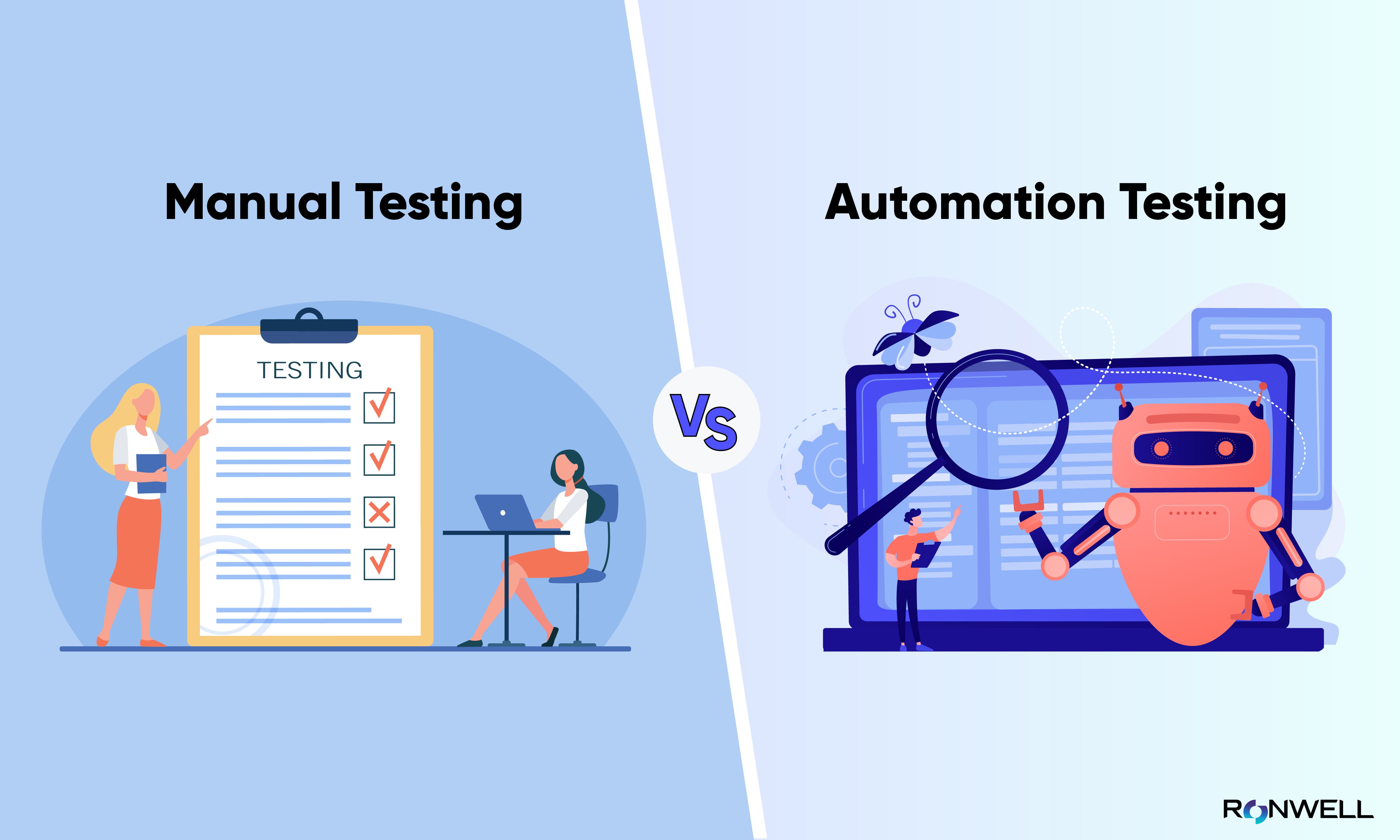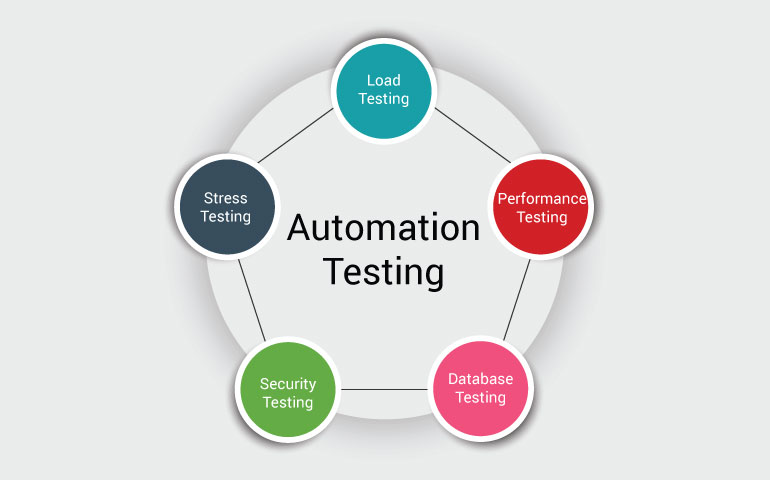Automation Testing Frameworks: Streamlining Intricate Testing Circumstances
Automation Testing Frameworks: Streamlining Intricate Testing Circumstances
Blog Article
From Handbook to Automated Testing: A Comprehensive Guide to Transitioning Smoothly and Effectively
In the realm of software application testing, the change from guidebook to automated processes has come to be a significantly essential transition for companies looking for to improve effectiveness and accuracy in their testing techniques. As modern technology remains to advancement, the need for reliable and smooth automatic screening approaches has actually never been much more important. The trip from handbook to automated testing is not without its obstacles, but when approached strategically and with a clear strategy in mind, the benefits can be substantial - automation testing. In this thorough guide, we will certainly explore essential steps and factors to consider crucial for a successful transition, from the first choice of devices to the combination of automation right into existing operations. Stay tuned to uncover the understandings that will assist pave the means for a smoother and much more reliable screening process.
Advantages of Automated Evaluating
Automated screening provides countless advantages, improving performance and accuracy in software application growth processes. One main advantage is the considerable decrease in screening time. Automated tests can be run concurrently on numerous devices and operating systems, drastically accelerating the screening stage compared to hands-on screening. This raised efficiency permits faster responses on the top quality of the software application, allowing programmers to recognize and deal with problems without delay.
Furthermore, automated testing guarantees a higher level of accuracy in spotting problems. Because automated tests follow predefined manuscripts, human error is reduced, resulting in more dependable test outcomes. Uniformity in screening is likewise enhanced, as automated tests execute the same actions specifically each time they are run. This consistency is important in guaranteeing that all functionalities of the software are extensively checked, minimizing the possibility of undetected bugs sliding with to production.
Selecting the Right Devices

First of all, evaluate your objectives and needs. Understand the extent of your project, the innovations entailed, and the capability of your team. This evaluation will assist you identify the features and capacities you call for in your screening devices.
Second of all, think about the compatibility of the tools with your existing systems and processes. Seamless integration with your current software program growth lifecycle is important to make certain a smooth shift to automation.
Additionally, review the scalability and adaptability of the tools. As your screening requires develop, the devices must be able to adjust and fit changes properly.
Finally, consider the assistance and neighborhood around the devices. Robust assistance and an active user neighborhood can offer beneficial resources and assistance when carrying out automated testing. By thoroughly taking into consideration these elements, you can pick the right tools that line up with your requirements and set the phase for an effective transition to automated screening.
Composing Reliable Test Scripts

When crafting test manuscripts, it is important to consider the certain requirements of the software program being evaluated and make certain that the scripts attend to all crucial capabilities. Detailed and clear naming conventions for test scripts and test instances can enhance readability and maintainability. In addition, incorporating error handling devices within the test scripts can aid in identifying and attending to issues without delay.
Additionally, arranging examination scripts into modular elements can boost reusability and scalability, decreasing redundancy and improving performance in test script maintenance. Routine testimonials and updates to evaluate scripts are critical to equal progressing software program needs and functionalities. By complying with these principles, testers can produce effective and robust test scripts that contribute substantially to the success of automated screening procedures.
Integrating Automation Into Workflows
Reliable assimilation of automation devices right into existing workflows enhances and improves procedures productivity within software development cycles. When incorporating automation into workflows, it is crucial to identify repetitive tasks that can be automated to conserve time and lower human error. By seamlessly incorporating automated testing tools like Selenium or Appium into the software application growth lifecycle, teams can achieve faster feedback on code changes, leading to quicker pest discovery and resolution. This assimilation permits constant testing throughout the development procedure, making certain that any kind of concerns are recognized beforehand, leading to higher software top quality. In addition, automation can be used to trigger examinations immediately after each code commit, providing prompt validation and liberating testers to concentrate on more complex circumstances. Appropriate integration of automation devices requires collaboration in between advancement, screening, and procedures teams to establish a unified workflow that optimizes effectiveness and effectiveness in supplying top notch software.
Making Sure a Smooth Change
Successfully transitioning to automated testing includes thorough planning and careful execution to take full advantage of and lessen disturbances efficiency in the software advancement process - automation testing. To make sure a smooth change, it is necessary to start by conducting a complete analysis of the existing screening procedures and recognizing locations where automation can bring one of the most substantial benefits. Involving with all stakeholders early on in the process, including developers, testers, and project supervisors, is crucial for garnering assistance and buy-in for the automation campaign
Interaction is vital throughout this shift phase. Clear communication of the objectives, benefits, and assumptions of automated screening aids to handle any type of resistance or issues that may occur. Additionally, providing ample training and sources for group participants to upskill in automation devices and methods is crucial for guaranteeing a successful change.

Verdict
To conclude, transitioning from guidebook to automated testing provides various benefits, including enhanced effectiveness and dependability. By choosing the proper devices, composing efficient test scripts, and integrating automation perfectly into workflows, companies can ensure a smooth and successful change. It is vital to welcome automation as a beneficial property in software program screening processes to enhance overall quality and performance.
In the world of software application testing, the shift from guidebook to automated processes has become a significantly essential shift for companies seeking to boost efficiency and accuracy in their screening techniques. Automated examinations try here can be run at the same time on numerous devices and operating systems, drastically speeding up the screening stage see page compared to hand-operated screening. Consistency in screening is likewise improved, as automated examinations perform the same actions exactly each time they are run.To ensure the effective implementation of picked testing tools, the production of effective examination scripts plays a critical duty in validating the capability and performance of automated procedures - automation testing. By complying with these concepts, testers can produce effective and robust examination scripts that add considerably to the success of automated screening processes
Report this page